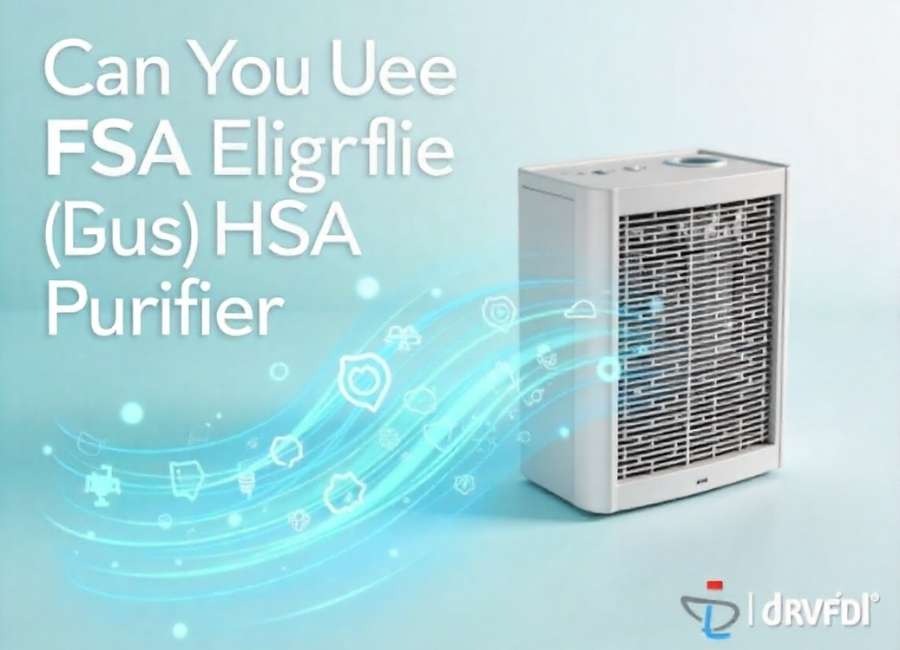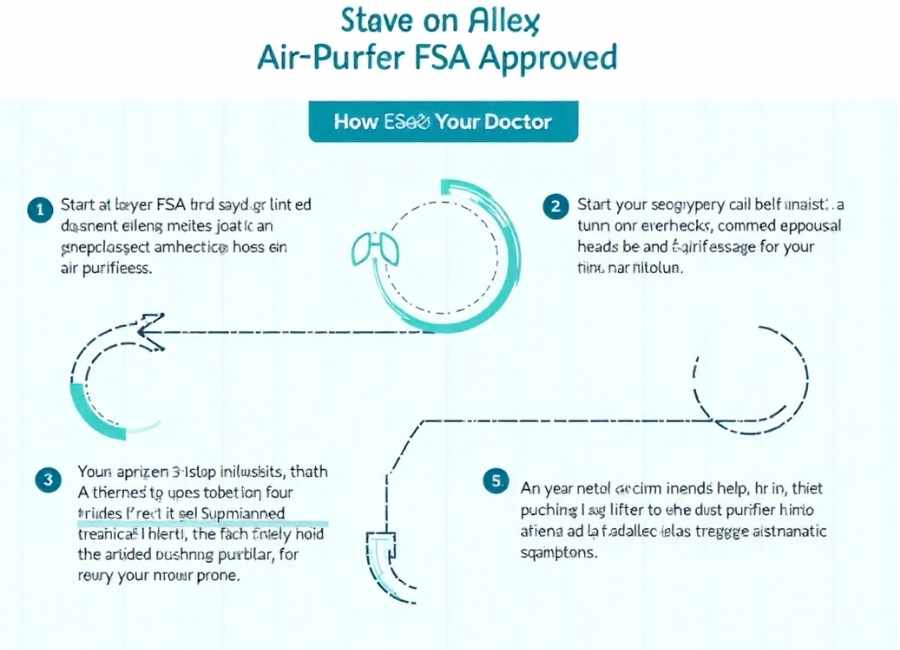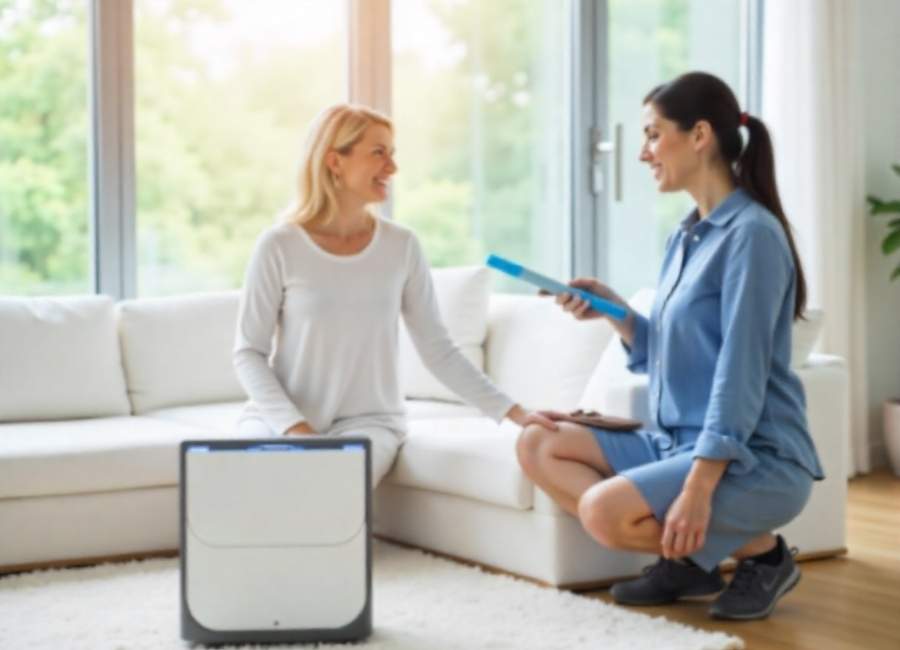Managing your health often involves more than just doctor visits and prescriptions. The environment you live in plays a significant role, and for many, clean air is a critical component of staying healthy. This has led many people to invest in air purifiers, especially those with allergies, asthma, or other respiratory conditions.
If you have a Flexible Spending Account (FSA), you might be wondering if you can use these pre-tax funds to purchase an air purifier. An FSA is a great way to save money on eligible medical expenses, but the rules on what qualifies can sometimes be confusing.
This guide will explain everything you need to know about using your FSA for an air purifier. We’ll cover the requirements, the necessary documentation, and the steps you need to take to get your purchase approved.
What is a Flexible Spending Account (FSA)?
A Flexible Spending Account, or FSA, is a special account you put money into that you can use to pay for certain out-of-pocket healthcare costs. Because you don’t pay taxes on this money, you can save a considerable amount on medical expenses. FSAs are a benefit offered by many employers, allowing you to set aside a portion of your earnings before taxes.
However, there’s a catch: you can only use FSA funds for “qualified medical expenses,” as defined by the IRS. These typically include things like deductibles, copayments, prescription medications, and dental and vision care. The list is extensive, but not everything health-related makes the cut automatically.
Can You Use FSA Funds for an Air Purifier?

The short answer is yes, but with a condition. An air purifier is not automatically considered a qualified medical expense. To be eligible for FSA reimbursement, the air purifier must be used to treat, prevent, or alleviate a specific medical condition. (Are Air Purifiers FSA/HSA Eligible?, n.d.)
This means you can’t simply buy an air purifier for general wellness and expect it to be covered. You need to demonstrate a clear medical necessity for the device. Conditions that often qualify include:
- Asthma
- Allergies (especially to dust, pollen, or pet dander)
- Chronic sinusitis
- Other respiratory conditions that are aggravated by airborne particles
If you or a dependent suffers from one of these conditions, you have a strong case for getting your air purifier covered by your FSA.
How to Get Your Air Purifier FSA Approved

To use your FSA funds for an air purifier, you will almost always need a Letter of Medical Necessity (LMN) from a healthcare provider. (FAQs – FSAFEDS, n.d.) This letter is the key piece of documentation that proves the air purifier is essential for your medical care.
Here’s a step-by-step guide to the process:
1. Consult With Your Doctor
Start by scheduling an appointment with your doctor, allergist, or another relevant healthcare professional. Discuss your medical condition and how an air purifier could help manage your symptoms. Explain that you need a Letter of Medical Necessity to submit to your FSA administrator.
2. Obtain a Letter of Medical Necessity (LMN)
Your doctor will write a letter that formally recommends an air purifier for your medical treatment. A comprehensive LMN should include:
- Your specific medical diagnosis (e.g., “allergic rhinitis,” “moderate persistent asthma”).
- A clear recommendation for an air purifier to treat your condition.
- An explanation of how the air purifier will help (e.g., “to filter out airborne allergens like dust mites and pollen that trigger asthmatic symptoms”).
- The doctor’s signature and contact information.
Having a detailed letter strengthens your claim and reduces the chances of it being denied.

3. Purchase the Right Air Purifier
Once you have your LMN, you can purchase the air purifier. Keep the receipt, as you will need it for reimbursement. Some FSA plans provide a debit card, but even if you use it for the purchase, you should still keep the LMN and receipt on file in case your administrator requests proof.
It’s a good idea to choose an air purifier that aligns with your doctor’s recommendation. For example, if your LMN specifies the need to remove allergens, a model with a HEPA filter would be the most appropriate choice.
4. Submit for Reimbursement
The final step is to submit your claim to your FSA administrator. This process usually involves filling out a claim form and attaching copies of:
- The Letter of Medical Necessity (LMN).
- The itemized receipt for the air purifier purchase.
You can typically submit your claim online, through a mobile app, or via mail. After your administrator reviews and approves the claim, you will be reimbursed from your FSA funds.
What About Replacement Filters?
Just like the air purifier itself, replacement filters can also be considered a qualified medical expense under the same conditions. (Are Air Purifier Filters FSA Eligible?, n.d.) If the air purifier is medically necessary, then the filters required for it to function are also eligible.
You will need to keep your original Letter of Medical Necessity on file, as it generally covers the ongoing costs associated with the recommended equipment. When you purchase new filters, keep the receipt and submit it for reimbursement just as you did with the initial unit.
Get Your Health Expenses Covered
Using your FSA to purchase an air purifier is a smart financial move if you have a qualifying medical condition. It allows you to use pre-tax dollars to invest in a device that can significantly improve your quality of life by creating a healthier indoor environment.
The key is to follow the correct procedure. By consulting with your doctor and obtaining a Letter of Medical Necessity, you can ensure your claim is approved without any issues. This small amount of administrative work is well worth the savings and the health benefits you’ll receive.
If you have any doubts, it’s always a good idea to contact your FSA administrator directly to confirm their specific requirements before making a purchase.











